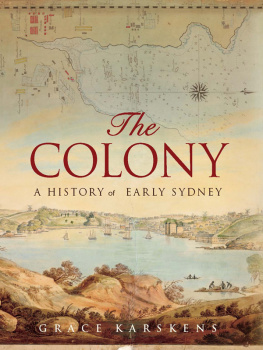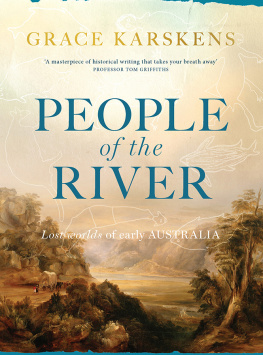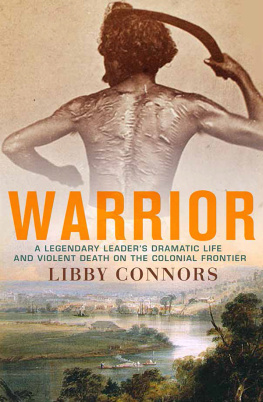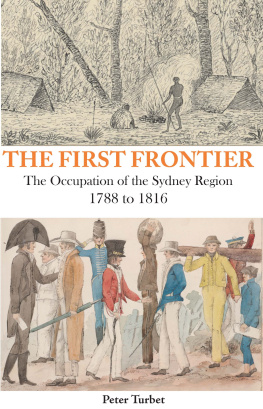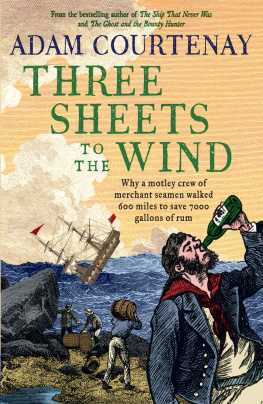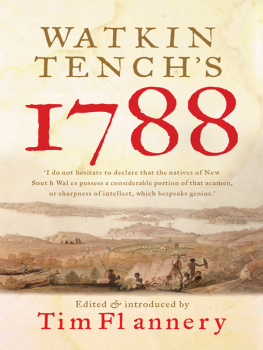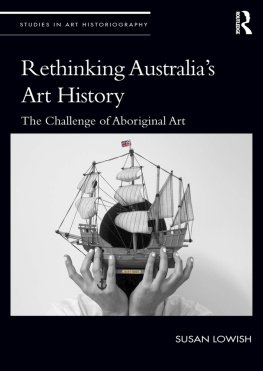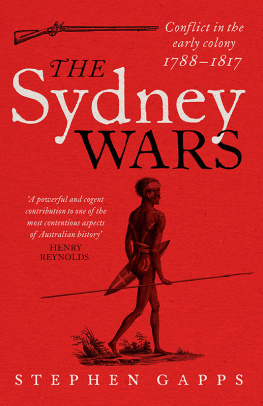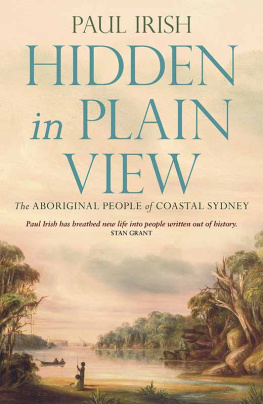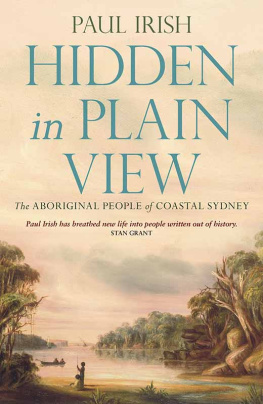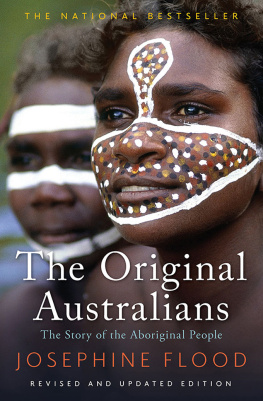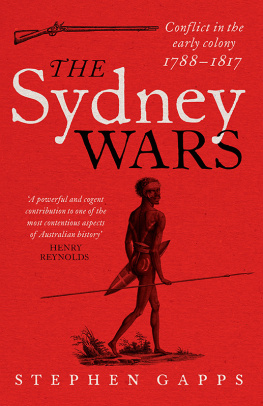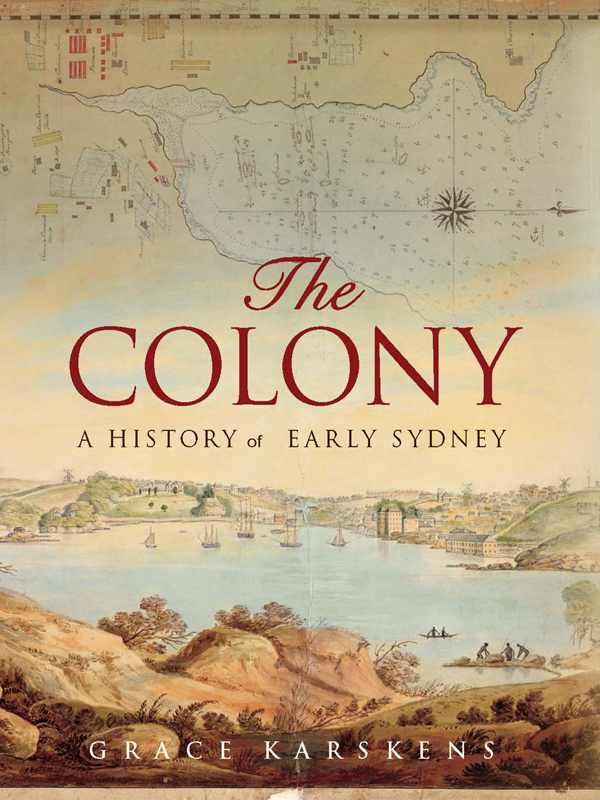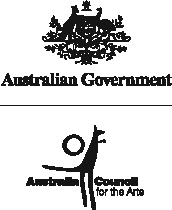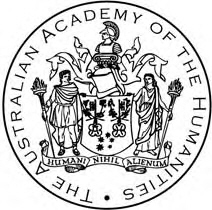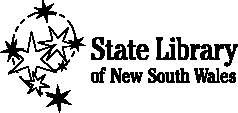The generous support and assistance of the City of Sydneys History Program is gratefully acknowledged.
This project has been assisted by the Australian Government through the Australia Council for the Arts, its arts funding and advisory body.
The generous assistance of the State Library of New South Wales in the production of this book is gratefully acknowledged.
The
COLONY
A HISTORY Of EARLY SYDNEY

GRACE KARSKENS

First published in 2009
Copyright Grace Karskens 2009
Every reasonable attempt has been made to contact owners and copyright holders of the images reproduced in this book. Any person with further information on these images is invited to contact the author via the publisher.
All rights reserved. No part of this book may be reproduced or transmitted in any form or by any means, electronic or mechanical, including photocopying, recording or by any information storage and retrieval system, without prior permission in writing from the publisher. The Australian Copyright Act 1968 (the Act) allows a maximum of one chapter or 10 per cent of this book, whichever is the greater, to be photocopied by any educational institution for its educational purposes provided that the educational institution (or body that administers it) has given a remuneration notice to Copyright Agency Limited (CAL) under the Act.
Allen & Unwin
83 Alexander Street
Crows Nest NSW 2065
Australia
Phone: (61 2) 8425 0100
Fax: (61 2) 9906 2218
Email: info@allenandunwin.com
Web: www.allenandunwin.com
National Library of Australia
Cataloguing-in-Publication entry:
Karskens, Grace.
The colony: a history of early Sydney/Grace Karskens
ISBN: 978 1 74175 637 1 (hbk.)
Includes index. Bibliography.
Aboriginal Australians New South Wales Sydney History. Sydney (N.S.W.) History 17881851. Sydney (N.S.W.) Social conditions 17881851.
994.41
Index by Russell Brooks
Internal design by Lisa White
Set in 11.5/17 pt Minion by Midland Typesetters, Australia Printed in Singapore by KHL Printing Co Pty Ltd
10 9 8 7 6 5 4 3 2 1
For my parents
Francine and Bill Karskens
who made new lives in Sydney too
with love and thanks
Contents
T his book has been a long time coming. In the years between its conception and birth I moved home, changed my workplace and started a new career. My children became adults, my parents reached their eighties and I acquired a brood of beautiful nieces and nephews. Sydney hosted the Olympic Games with great success, global warming became a fact rather than a theory, 9/11 changed the way we think about cities, the Asian tsunami wreaked unspeakable horror. Australia went to war in Iraq, Prime Minister John Howards reign came to an end, and there was an official apology to the Stolen Generations. The book was a sort of constant amidst all this. It endured. Thanks to all the polite and kind peoplefriends, neighbours, colleagueswho always asked after it and never once rolled their eyes.
The research, writing and publication was made possible by the generous financial support of a number of institutions. The early years of research were funded by an Australian Research Council Queen Elizabeth II Fellowship, while in later years I was unstintingly supported by my own institution, the School of History and Philosophy at the University of New South Wales. The publication of this book in its handsome format was made possible by generous grants from the Australia Council, Sydney City Council, the Australian Academy of Humanities and the State Library of New South Wales.
The book was made a reality by the energetic and professional people at Allen & Unwin. I am most grateful to Elizabeth Weiss, who had faith in it from the start and has been a tireless advocate and a wonderful advisor: she is an editor in the proper sense of the word. Both she and Alexandra Nahlous deserve medals for their patience and generosity. It has been such a pleasure to work with them, and also with Clara Finlay, and Karen Ward, who copy-edited the manuscript with such an extraordinary eye for detail and consistency. Thank you all.
The book is based upon the marvellous resources of our treasured libraries and archives. My heartfelt thanks, once more, to the expert staff of the Mitchell Library, State Records of New South Wales and the University of New South Wales Library. The sources for this book include the many beautiful pictures created by colonial and contemporary artists you see reproduced in these pages. I am grateful to the National Library of Australia, the Australian Museum, Queen Victoria Museum and Art Gallery, the Powerhouse Museum, Australian National Botanic Gardens, the Natural History Museum (especially Angela Thresher and Sally Jennings) and the British Library, for their prompt assistance and permission to reproduce these works. Elizabeth Ellis and Kevin Leamon made the inclusion of so many images from the great collections of the Mitchell and Dixson Libraries possible. Thanks also to artist Kate Nolan, whose exquisite pencil drawings grace these pages, and to Charles Dortch and Peter Stanbury for allowing us to use their respective works in the new drawings.
Some of this material was gathered for me by research assistants, and I want to acknowledge and thank Benedict Taylor, Rachel Davies and Alicia Gray for their intelligent and efficient assistance, their interest in the project, and their friendship.
I suspect experts in diverse fields across the nation will be heaving a sigh of relief at the emergence of this book. It means I will no longer pester them for opinions and advice on everything from plants and ecosystems to early colonial tools, from army worms to historic houses, from arcane legal terminology to blue and white china. I am grateful for the expert guidance of Val Attenbrow, Doug Benson, James Broadbent, Penny Crook, Tim Flannery, Ralph Hawkins, Don Herbison-Evans, Bruce Kercher, Mike MacPhail, Bob Salt, Barry Smith, Iain Stuart and Alan Ward.
The book was also nourished over the years by talk with colleagues and friends in history and archaeology, and flourished in a nimbus of enthusiasm and support. Many of these scholars sent me copies of their own published and unpublished works. Thank you to Robert Allen, Michael Bennet, Peter Borsay, Sarah Colley, Chris Cunningham, Graeme Davison, Shirley Fitzgerald, Lisa Ford, Geoff Ford, Rae Frances, Stephen Gapps, Wayne Johnson, Susan Lawrence, Carol Liston, Kirsten McKenzie, Hamish Maxwell Stewart, Jacqui Newling, Naomi Parry, John Petersen, Michael Pickering, Olwyn Pryke, Noeline Pullen, Marcus Rediker, David Roberts, Bruce Scates, Lorraine Stacker and Pam Trimmer; and to my colleagues at the University of New South Wales, especially Anne OBrien, Ruth Balint, John Gascoigne, Mina Roces and Martyn Lyons. I am especially grateful to those who also read the chapters in draft and offered such helpful advice and blessed encouragement: Tom Griffiths, Barrie Dyster, Ralph Hawkins, Heather Goodall, Vicky Haskins, Bob Salt and Keith Vincent Smith, I am indebted to you.

